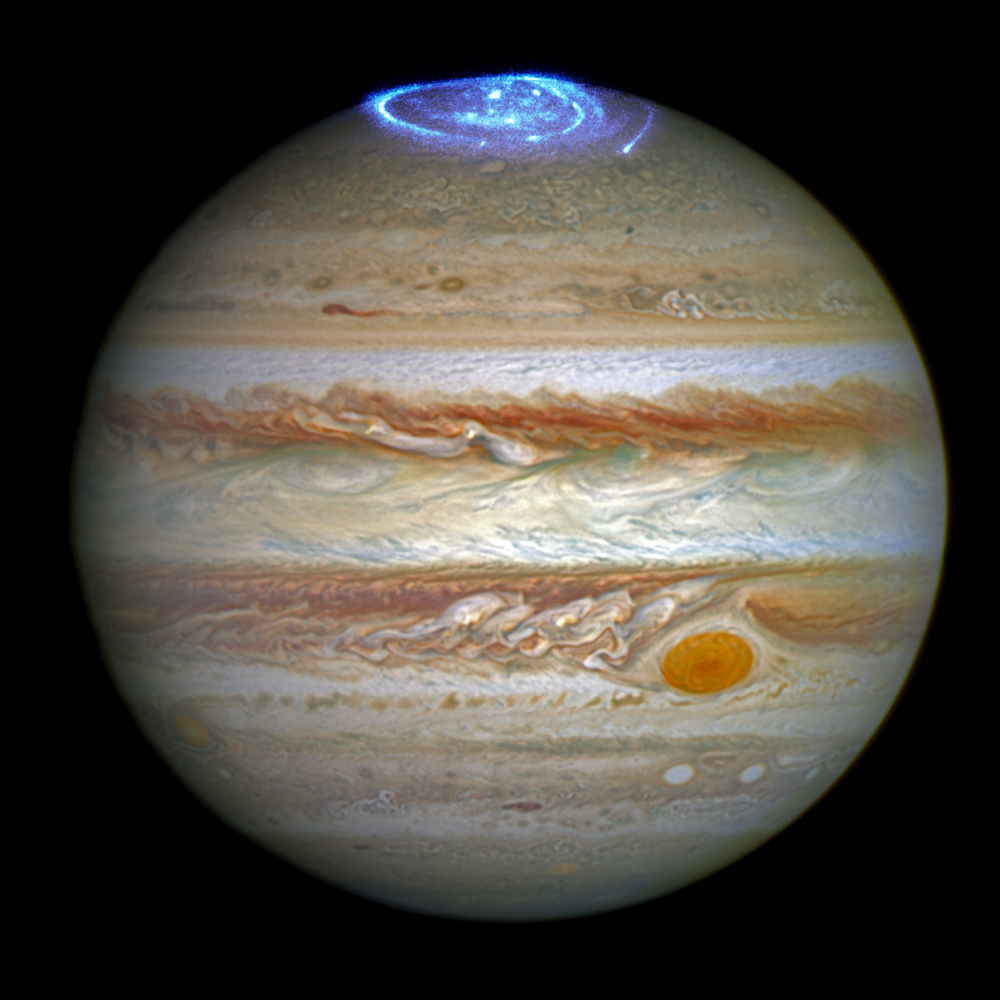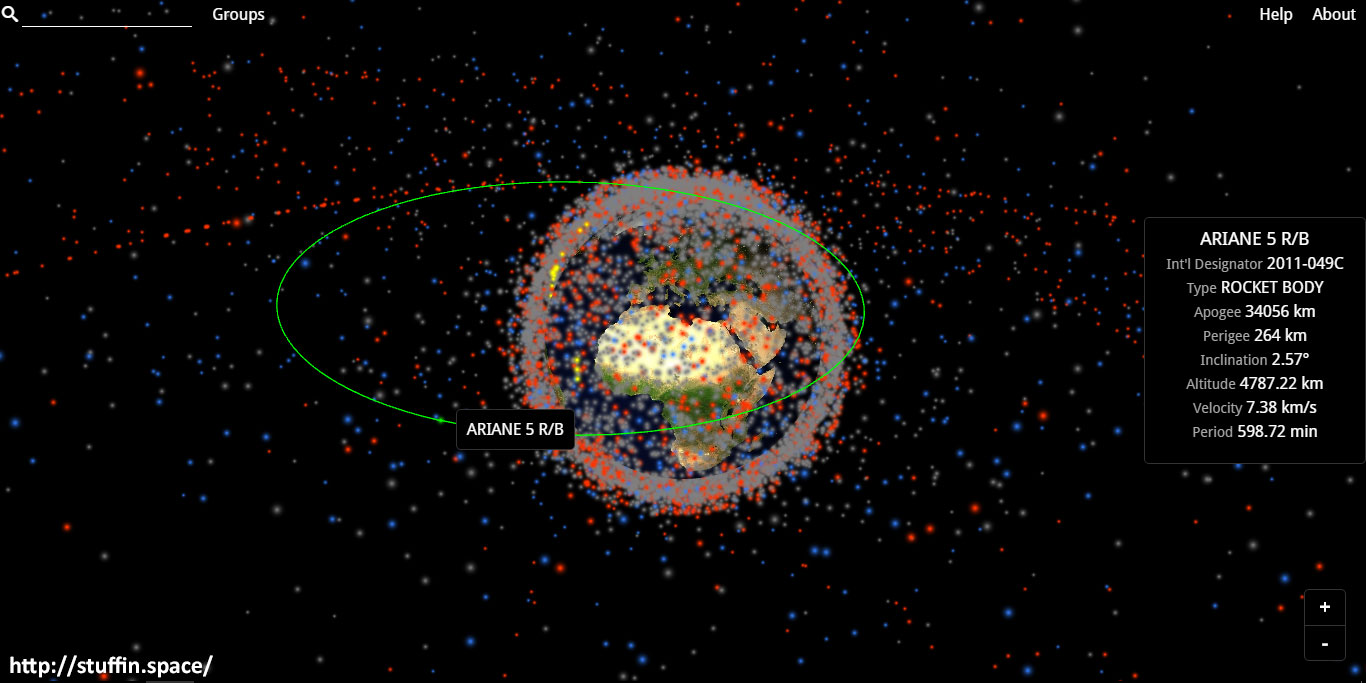Jupiter‘s clouds are amazing, it’s like watching a painting move. The thing you will remember most about Jovian is its Great Red Spot (GRS). It’s a massive anticyclonic storm that’s existed for more than 350 years. On 3 April 2017, the GRS was measuring 16,350 km (10,159 mi) in width, or about 1.3 times as wide as Earth. The cloud tops of the GRS are about 8 km above the surrounding clouds. The centre is relatively calm, but farther out, the winds scream at 430 to 680 km/h (270 to 425 mph).
Current theories show the planet isn’t spinning fast enough to power up a storm this large, however, one suggestion is that the GRS might just be a particularly successful storm in capturing neighbours to power itself to this size. Storms like this are not uncommon within the turbulent atmospheres of gas giants. On a side note, Jupiter’s trademark Great Red Spot has shrunk to its smallest size ever measured, and they’re not exactly sure why yet.
A smaller red spot, designated Oval BA, formed in March 2000 from the merger of three white ovals, and turned red in the beginning of 2006. White and brown ovals are lesser unnamed storms. Oval BA is about the size of Earth, and has wind speeds of about 618 km/h (384 mph). Astronomers have affectionately called it Red Jr., Red Spot Jr., or The Little Red Spot. The GRS and Oval BA pass each other about every two years, but they haven’t merged yet.
A third red spot appeared in May 2008. The spot, previously a white oval, was about half the size of Earth. It was designated the South Tropical Little Red Spot (LRS), and was given the nickname the Baby Red Spot. Unfortunately, it didn’t have a long lifespan, because the LRS encountered the GRS in late June to early July 2008, and in the course of a collision, the smaller red spot was shredded into pieces. During this encounter Oval BA was present nearby, but played no apparent role in destruction of the LRS.
So, why do these powerful storms all have a red colour? Well, nobody knows for sure, but one theory is that it dredges material from deep beneath Jupiter’s cloud tops and lifts it to higher altitudes where solar ultraviolet radiation produces the familiar red colour.
Here are a few more things I would like to share with you. The GRS gets so hot that temperatures in Jupiter’s upper atmosphere are comparable to those found at Earth, yet on Earth it’s done by sunlight. And Juno recently passed by Jupiter and made some stunning photos, among other things. And lastly, I’ve made a flag of Jupiter, just for fun, and because people never listen.
Updates:
- We may know why Jupiter’s Great Red Spot is red instead of white.
- Jupiter’s Great Red Spot is about 300 km (200 mi) deep.
- NASA reveals Jupiter’s coloured bands.
- Jupiter’s Great Red Spot getting taller as it shrinks.
GB’s flag of Jupiter.








